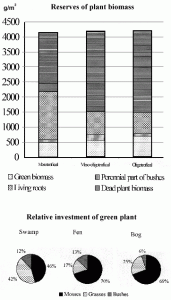The Central Siberian Botanical Garden, SB RAS, Novosibirsk
Head of the Institute:
Igor Yu.Koropachinsky, Academician of the RAS
101, Zolotodolinskaya Srt., Novosibirsk, 630090, Russia
Tel.: (383 2) 35 41 01, Fax: (383 2) 35 49 86,
email: root@botgard.nsk.su
Principal researchers:
V.P.Sedelnikov, Doctor of Biological Sciences, Professor,
Head of the Laboratory of Ecology and Geobotany
Project objectives
The project is aimed at inventarisation, characteristics and revealing of the regularities of spatial organisation of the diversity of the plant communities of southern Western Siberian Plains (forest-steppe and steppe zones) and its mountainous frame (the Altai, Western Sayan).
This region is of the most complicated structure of biological diversity resulting from wide zonality and altitudinal belts. Here, the main areas of the agricultural soils, coil-mining industry, large industrial works as well as the main part of the population of the Western Siberian region are concentrated.
Their activities are the cause of the negative transformation and destruction of many types of terrestrial ecosystems. In particular, the steppe vegetation is completely destroyed, the phytocoenotic diversity of the forest-steppe zone and mountainous territories is abruptly decreased.
The vegetation cover begins to lose its biosphere and resource functions. The investigations, carried out by the researchers of the laboratory, showed that the simplification of the vertical structure of communities, the decrease of the species diversity, the fall of the productivity and the appearance of the large amount of the secondary communities take place, which, as a result, on the principle of reverse links, influences negatively the well-being of the population.
At the same time, the south of Western Siberia with the mountainous frame is the unique region for the revealing of the degree of biodiversity as well as its spatial organisation. Here, the borders of many natural zones and climatic sectors run, zonality and altitudinal belts are well marked, practically all types of the terrestrial ecosystems of the Northern Asia are presented here.
Background and significance of objectives
For the realisation of the project, it is suggested to solve the following main tasks:
- to clarify the main types of the habitats, to define their parameters and to develop the classification of habitats for different natural zones and certain regions;
- to carry out the inventarisation and to make descriptions of the whole biodiversity of the plant communities for the region under study and, on this basis, to make the computer data base for common use;
- to develop criteria for estimation of the anthropogenic transformation of the vegetation cover and to reveal the main lines of anthropogenic transformation;
- to identify rare and endangered plant communities and individual plant species;
- to define the centres of the concentration of phytocoenotic diversity and to develop the systems of recommendations for their protection;
- to estimate the efficiency of the existent protected territories for conservation of the species and phytocoenotic diversity of the vegetation of the studied territory;
- to make a series of the topical large-scaled and middle-scaled maps revealing the current level of diversity of the vegetation cover of the certain regions (Novosibirsk Region, Kemerovo Region, the Republic of Altai) and its spatial-structural organisation. The map data are the base for the current and long-term monitoring of large natural complexes as well as separate regions.
On all points mentioned above, there is a great amount of fond materials including cartographic ones and a lot of publications covering the partial solving of the given problems. At present, the works on the creation of a 1:1000000 ecological phytocoenotic map for southern Western and Middle Siberia are conducted; a 1:500000 map of the vegetation for Novosibirsk Region, an ecological map for Kemerovo Region were completed; a start has been made on the writing of the monograph “The vegetation of the south of Western and Middle Siberia”. A start has been made on the creation of the computer databases “The plant communities of Siberia” and “Rare and endangered plant communities of Siberia”, part of the material is already generalised in the monograph “Rare and endangered communities of Siberia”.
Research plan: approaches and methods
The fond material will be processed using the current computer programmes for the revealing of the main units of diversity and their characteristics. Additional field works will be conducted in poorly studied regions. The map-making of the regions with the use of the aero-space pictures will be carried out for the revealing of the spatial structural organisation of biodiversity. The methods of many measured statistics and the theory of the multitudes will be used for the revealing of the hierarchical organisation of coenotic diversity. The methods of the ordination will be used for identification of the factors that control the spatial structure of biodiversity.
Expected results
A database will be developed on the diversity of the plant communities of forest-steppe, steppe zones and mountainous systems of the south of Western Siberia. The main regions of the concentration of biodiversity will be revealed and, on their basis, the recommendations on their protection will be developed. For large areas (like administrative regions), ecological phytocoenotic maps will be created showing the degree of phytocoenotic diversity as well as its spatial organisation. The degree of the anthropogenic transformation of the vegetation will be revealed, the losses of biodiversity will be estimated and the prediction of its dynamics will be given. The most important results will be the database, the maps and the monograph.
List of publications of participants related to the project
More than 100 papers and about 10 monographs have been published on the topic of the project. Here are given only the main, latest monographs.
-
Anthropogenic Transformation of the Vegetation Cover of Western Siberia. – Novosibirsk: Nauka, 1992. – 152 p.
-
Green Book of Siberia: Rare and Endangered Plant Communities. – Novosibirsk: Nauka, 1996. – 396 p.
-
Sedelnikov V.P. Alpine vegetation of the Altai-Sayany mountainous region, Novosibirsk, Nauka, 1988. – 221 p.
-
Khramov A.A., Valutsky V.I. Forest and bog phytocoenoses of the Eastern Vasyuganye. – Novosibirsk: Nauka, 1977. – 222 p.

